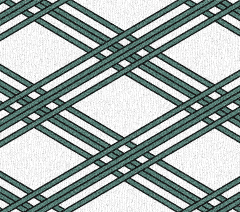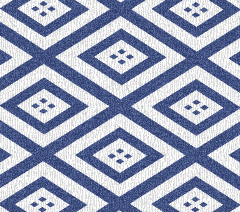|
||
 |
||
 |
@ |  miedasuki OdζF |
@
(C)2001 Japanese Architecture and Art Net Users System.@No reproduction or republication without written permission.
fΪΜeLXgEΚ^ECXgΘΗASΔΜRecΜ³f‘»E]ΪπΦΆά·B
|
||||||
| @ | ||||||
| tasukimon@ζFΆ | ||||||
| KEY WORD :@art history / paintings | ||||||
| @ | ||||||
| Also called *hishigoushi Hiq. A design motif of crossed diagonals. Named for its resemblance to the criss-crossed sash used to tuck up kimono ¨ sleeves. A type of *yuusoku mon'you LEΆl. It has been used since at least in the Nara period for woven fabrics including twill and brocade, and for dyed fabrics. It was popular during the Heian period because it was thought to be a stable and tranquil motif. Variations of the motif include: miedasuki OdζF, diamonds repeated along diagonals which can be read in interlocking groups of three hence mie Od; fundoutsunagi ͺΊq, a motif using curvilinear intersecting lines; and toridasuki ΉζF (also called toridasuki hanabishimon ΉζFΤHΆ), a design of interlocking circular units comprising eight stylized birds around a central floral diamond *hanabishi mon'you ΤHΆl that is sometimes said to resemble the cross-section of a spool of thread; kesadasuki UΎζF, comprising horizontal and vertical lines as well as crossed diagonals and frequently used in Buddhist art. | ||||||
| @ | ||||||
@
|
||||||
@ |
||||||
| REFERENCES: | ||||||
| @ | ||||||
| EXTERNAL LINKS: | ||||||
| @@ | ||||||
| NOTES: | ||||||
| @ | ||||||
(C)2001 Japanese Architecture and Art Net Users System.@No reproduction or republication without written permission. fΪΜeLXgEΚ^ECXgΘΗASΔΜRecΜ³f‘»E]ΪπΦΆά·B |
||||||
| @ |